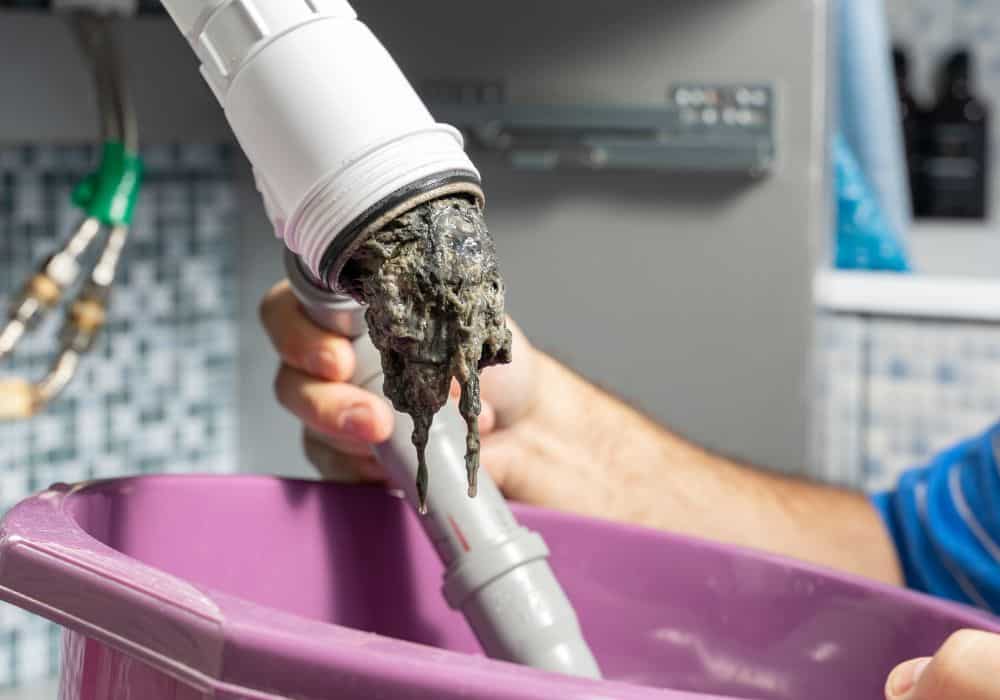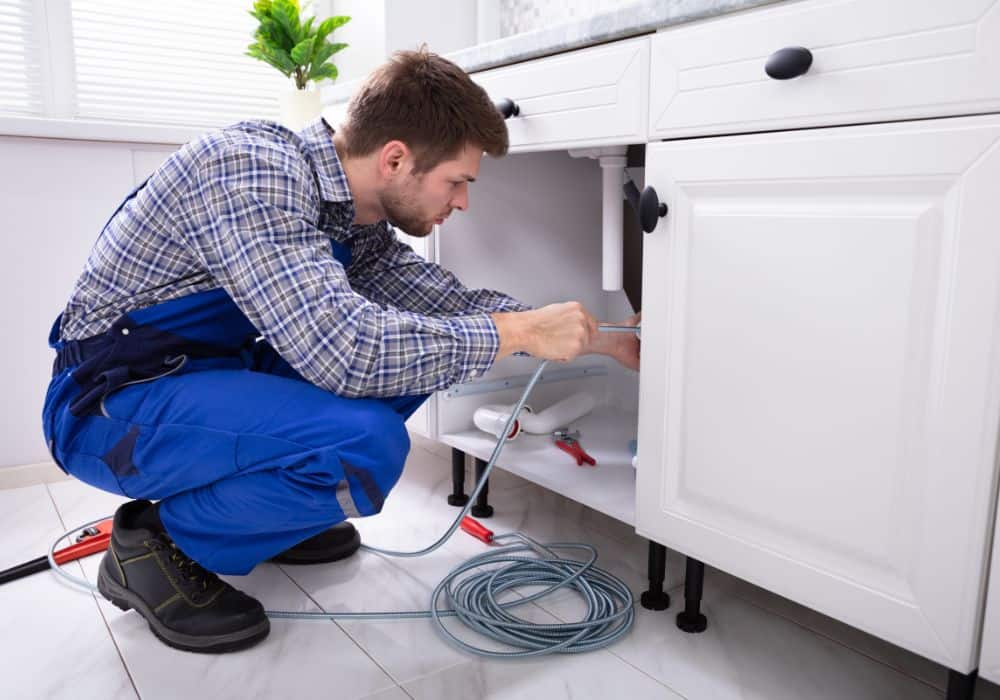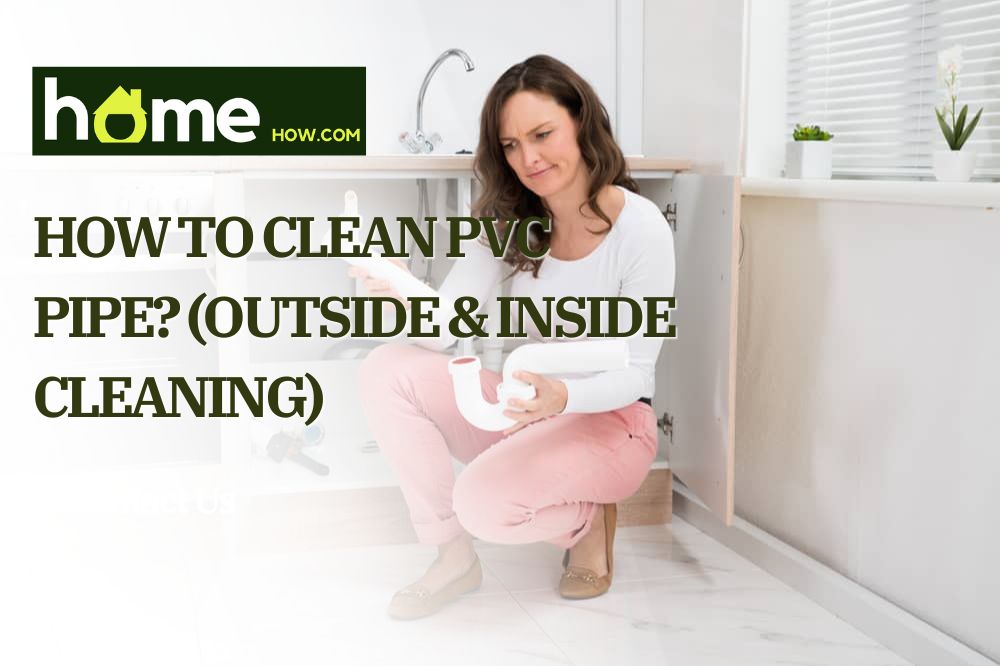PVC plumbing is sturdy and so is PVC pipe. However, in many cases, PVC is also only useful when you have it cleaned out. A little dusty texture might be alright in most cases, but you may need to do more to make sure your pipes are clean, clog-free, and ready at other times.
Like many other building materials, people get worried about proper cleaning techniques when it comes to PVC plumbing. Are you worried that a specific solvent could react? Let’s talk about the most common ways to clear out that plumbing.
Tools
What you need to clean your PVC pipe will change depending on how much you need to clean off it, and whether you are looking to unclog the pipe. These tools, in particular, can help:
PRO TIP – Before you run to the hardware store, make sure to read our instructions on cleaning pipes. Different cleaning techniques will require different tools, and you don’t need to buy them all. Come up with a plan, then go shopping. It’ll save you some serious money.
PVC pipe cleaning methods by purpose
There are several ways to clean PVC pipe, and the right method for you all depends on what you have available as well as the goal of your project. Whether it’s unclogging the inside of a pipe drain or just clearing letters off a pipe, we got the solution.
To make things easier, we chose to do cleaning methods by purpose.

Surface cleaning
1. General cleaning (ideal)
The best way to clean the outside of a PVC pipe is to wipe the pipe with PVC cleaner using a pad or cloth. This is a specific solvent that is meant to clean PVC pipes, ideally prior to gluing PVC fittings and couplings together.
If you have dirt, grease, grime, or other types of gross stuff on the outside of your pipe, use a cleaner. It’s highly effective and is actually designed to remove grit prior to applying PVC primer and PVC cement.
To use a PVC cleaner, dip a rag into the cleaner and wipe the PVC down. This should be enough to ensure that you have a clean surface before you get gluing.
PRO TIP – Do this in a ventilated area. The vapors from this solvent are strong and can cause dizziness in sensitive people.
2. Lettering removal
Does your PVC pipe have a bunch of writing and letters on it? You might want to remove those before you start gluing or building with it. This is a pretty simple task. To do this, follow the steps below:
- If the lettering is very heavily stamped on the piping, dip a rag in Goo Gone. Rub the affected area to try to scrub it off.
- Wash away the Goo Gone with hot water and dish soap. This is actually the standard protocol for using this product.
- Use a different rag and dip it in acetone. Use the rag to wipe away the lettering. Let it dry before you add glue or use the PVC pipe.
PRO TIP – In most cases, people are able to get lettering off PVC without Goo Gone. Acetone can also be used to clean the exterior pipe surface without the heavy chemicals found in PVC cleaner.
Clog cleaning
1. How to clean a clog in your PVC plumbing (physical means)
Do you have a clog in a PVC pipe connected to a bath drain or a toilet bowl? We’re going to go through some of the easiest ways to get clogs removed.
- If the pipe has been removed from the plumbing system, use a brush to scrape debris out from the inside walls of the piping. This isn’t always doable, but if it is, you can easily remove debris through this method.
- Start trying to unclog the pipe using a plunger, if you can. A plunger is good for drains that have PVC pipe because the drain’s build allows you to create a vacuum. A couple of hard pumps can usually dislodge clogs and get things going.
- If a plunger hasn’t proven to be a good solution, use a drain snake to scrape the insides of the piping. You may need to call a professional plumber for this, but if you have a drain snake on hand and know how to use one, this will fix most clogs.
PRO TIP – Having a hard time getting things moving in a dry-ish pipe? Consider adding baking soda and vinegar to the edges of the interior of the pipe. The bubbling chemical reaction is said to help loosen things up.
2. How to clean a clog in your PVC plumbing (chemical means)
Grease buildup is common in kitchen plumbing, and yes, PVC pipes are usually the ones that tend to carry kitchen sludge out of your home. Thankfully, chemicals exist that make it easy to remove the gunk.
The best way to clear most organic clogs is to use an enzyme cleaner. Here’s how to use it:
- Pick out an enzyme cleaner from your local grocery store. If your pipes have a particularly foul smell, you might want to check out a scented option. They make them and they’re great at neutralizing odors.
- Pour the cleaner into your drain. Ideally, you’ll follow the instructions on the bottle, but it’s good to know that you won’t have any negative effects if you use more. There are no harsh chemicals in it, so it’s not like it will corrode your pipes.
- Wait for at least an hour and then flush the area out with water. How long you wait depends on the size of the mess as well as the instructions on the bottle. In most cases, it’s an hour minimum to upwards of eight for serious messes.
PRO TIP – Don’t have an enzyme cleaner on hand? Not a problem. Most “liquid plumbers” meant for kitchen use are safe for PVC pipes, primarily because kitchen plumbing is usually made from PVC pipes.
Extended Tips
Cleaning PVC pipe is pretty easy to do, for the most part. However, there are some tips that can help you make sure that your cleaning time isn’t spent foolishly:

- An enzymatic cleaner can break down organic material well, but if you can’t find one, you can also use a standard drain cleaner. The important thing to check for is the contents that clogged your drain. Regular materials won’t react with drain cleaner, but chemicals will.
- Avoid using chlorine or chlorinated cleaners with PVC pipe. Chlorine is one of the only chemicals that can add to corrosion in PVC piping.
- If you just need to clean the pipe interior without removing the pipe, a quick rinse with water and dish soap is usually enough. This won’t be as effective as acetone or a drain cleaner, but it often does enough to clean everything out sufficiently.
- You can also use acetone on the inside of the pipes to clear out any residue the enzymatic cleaner can’t get. Acetone is definitely the name of the game when it comes to PVC pipe cleaning in a pinch.
- If you use a chemical cleaner, always keep an eye on the instructions and follow them carefully. While enzyme cleaners are gentle, chemical cleaners aren’t and they can cause damage if used improperly. Instructions are there for a reason.
- Remember, the bigger concern is not the PVC plumbing in most cases. The metal fittings that often hold PVC pipes together tend to be more prone to corrosion and breakage. PVC itself can handle all sorts of chemicals. The other plumbing around it can’t, which is why sticking to gentle cleaners is wise.
- If the clog is persistent, do not try to make a mixture of cleaning solvents—call a plumber instead. Mixing solvents can cause a deadly reaction that leads to poisonous gas leaking out of the plumbing. When in doubt, just call a plumber. Trying to DIY your plumbing is not worth your life.
In Conclusion
There are a lot of reasons why you may need to clean PVC pipes. Sometimes, it’s just a matter of prepping your pipe for a new joint or a glue weld process. Other times, it’s due to a clog inside the pipe that is posing a hazard to the system your pipe is in.
Cleaning pipes don’t have to be a major ordeal, especially when you are working with a material like PVC. The important thing to remember is that PVC is remarkably sturdy, so most cleaning solvents can be used on it. The joints around it? Not so much.
In most cases, a single cleaning mistake will not harm your system. When in doubt, it’s always best to go with a gentle yet effective cleaner that won’t rock the boat.
